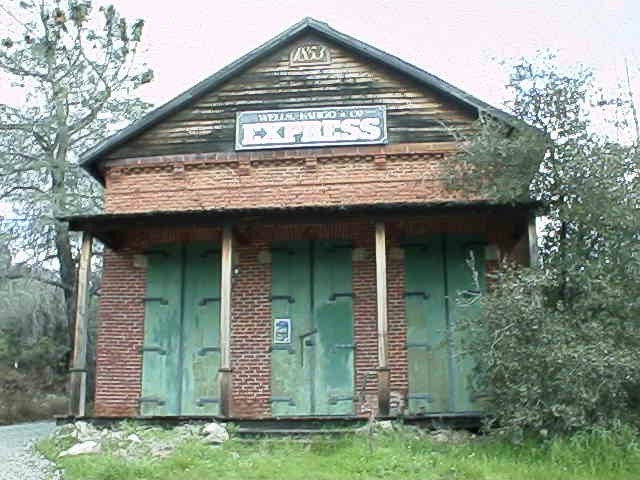|
|
Nevada County History
|
||||||||||

NEVADA COUNTY HISTORY
![]()

|
|
Nevada County History
|
||||||||||

NEVADA COUNTY HISTORY
![]()

The early pioneers, settlers and prospectors who crossed the plains of the central United States, pushed over the Rocky Mountains, endured the harsh deserts of Nevada, and then made it over the Sierra Nevada Mountains via the Donner Pass before the snows fell. They often rested from their labors for a few days at Greenhorn Creek, near the present location of Nevada City. Their cattle would frequently stray and would later be found about 3.5 miles west of their encampment. The cattle would be grazing on lush, sweet, green grass. This area we dubbed "the grassy valley", as it was a green oasis and a very pleasant resting stop.
During the late summer of 1849, two small bands of emigrants decided that they had traveled far enough and elected to stay the winter.
Nevada City and Grass Valley are nestled in the Sierra foothills about 52 miles northeast of Sacramento, California.
Nevada City was the first to be settled and was considered to be the more prestigious location. Modest to elegant homes were built on the hillsides of the city. Nevada city is situated at nearly 2,700 feet elevation. Tall pines, douglas fir, black oak, and cedars provided natural shade during the hot summer months when the temperatures reached into the 90 degree range. But, it also provided a beautiful, snow-covered canopy during the winter when occasional snowfall could reach depths of up to 3 feet, though under 1 foot was more commonplace.
At about 2,100 feet, Grass Valley’s lower elevation made some differences in the weather. During the summer, Grass Valley was only a few degrees warmer than Nevada City, but had way less snow that fell during the winter months. One of the original "Boom Towns" of the 1849-50 California Gold Rush, Grass Valley had several names before settling on Grass Valley, such as: Hangtown, Gold Flat, and its original name, Boston Ravine.
After the Marshall's American River Gold Strike, huge numbers of prospectors descended upon the two towns. There they built crude cabins out of the abundant supplies of pine and fir. With the first discovery of gold bearing quartz at Gold Hill in 1850, gold was so plentiful that claims were limited to 100 square feet. This was done to prevent the value of gold from dropping due to it's abundance. Over $25,000,000 in ore was taken from the hills and from Deer, Bear and Wolf Creeks in less than eight years.
As the smaller claims exhausted themselves, the larger mining companies were born. Grass Valley would eventually have three major gold producing claims: the Empire, Idaho-Maryland, and the North Star mines. As individual claims along the Yuba River and Bear and Deer Creeks either played out or proved non-productive, Grass Valley became the center for hard-rock mining.
With the departure of the small and individual mining operations, Grass Valley's population thinned down a bit, but became more stable and "respectable". Small shops and restaurants opened, and bit by bit families began to move into what was once a wild mining town. Nevada City was initially the location that was chosen to live in by the more established families, so it developed a bit faster than Grass Valley.
Today, both cities continue to hold their beauty and history. They both offer opportunities of all kinds to their present day residents. The area is now called "Little Silicon Valley," as high tech industry finds living and working in the area to be a wonderful way to go.
|
|
|

| NEVADA
COUNTY MUSEUM LINKS
Empire Mine State Park & Museum Nevada County Historical Society Museum
|
.
Got
a page or link to add here?
E-Mail
us!
 |
||
 |
 |
 |
 |
 |
 |
 |
 |
 |